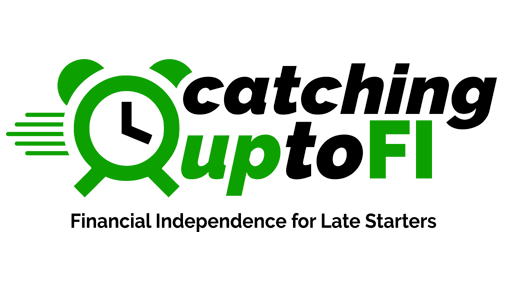At A Glance – a sinking fund is a way to save ahead for large purchases and smooth your monthly cash flow.
What Is A Sinking Fund?
A sinking fund is a way to save for a future purchase or bill by setting aside a little money in your budget each month. It can allow you to make a large purchase with cash.
An example would be to set aside some money each month to pay for a large dental bill that you know is coming. Or you could save some money each month to purchase a couch without putting it on a credit card.
Sinking funds are great for things that don’t come out of your regular monthly budget, like:
- Vacation
- Large home repair that you know is coming soon, like a roof or air conditioner
- Wedding
- Tuition/Books
- New tires or brakes for your car
- Yearly bills like insurance, property taxes or income taxes
- Furniture
- Kids athletic fees
Sinking Fund vs Emergency Fund
A sinking fund is different from an emergency fund. An emergency fund is to cover the unexpected. Those things you don’t know are coming, like a flat tire. A sinking fund is for something planned. You know the approximate cost and when you will need the money.
Benefits of A Sinking Fund
There are several benefits of using a sinking fund.
- A sinking fund smooths out your budget and monthly expenses. If you know you are going on vacation next summer or the water heater is about to go out, you can smooth your cash flow by saving a little each month. This is easier on your finances than paying a big bill all in one month.
- You can avoid fees or interest. Saving the money ahead and paying cash won’t cost any credit card interest. That saves you anywhere from 18-29%! And the “90 days same as cash” almost always costs you something. Either because you don’t pay it in 90 days, or because the price has been inflated to cover the cost of financing.
- Planning purchases ahead sets you up for wiser spending. If you are saving for an item over several months, you have time to evaluate if you REALLY want that item. Or maybe you can find it cheaper in the meantime.
- You can spend without guilt! If you have evaluated what, when and how much you are spending on an item, then you can purchase with no guilt. There shouldn’t be any buyer’s remorse!
- Cash gives you the power to negotiate. If you are paying cash for a large item, ask for a discount. Many businesses, including doctors’ offices, will give you at least a small discount for paying cash. They don’t have to pay the credit card transaction fee.
How To Create A Sinking Fund
A sinking fund is easy to set up and use. You can set up a sinking fund for anything you like, and have as many as you like. The money can be kept in cash or in a savings account. I put mine in a savings account and then use a spreadsheet to keep track of what is in each fund. You could also just use a pencil and paper.
First, decide what item or bill you want to save for. In the sample chart below, I am saving for 3 things. The next car I will buy, a vacation and a roof.
Next, determine their price and how long you have to save. In the example, I’m planning on spending approximately $20,000 on a car in 6 years (72 months), $2,000 on a vacation in 12 months, and $5,000 on a roof. I’m guessing the roof will need to be replaced in about 5 years.
Then divide the price by the number of months you have to save. In my example, I will need to save $275 per month for the car, $165/mo. for the vacation and $140/mo. for the roof.
I have a line in my spreadsheet for each fund to keep track of how much I have accumulated. In the example below, I have been accumulating for the car for 15 months, the vacation for 3 months, and the roof for 6 months.
| Item | Monthly deposit | Total So Far |
| Car (20k, 3 yrs) | $275 | $4,125 |
| Vacation (2k, 12mo.) | $165 | $ 495 |
| Roof (5k, 3 yrs) | $140 | $ 840 |
Be sure to put the monthly amount you are saving for each sinking fund in your budget. If it is for a one-time item, delete the line item when you are done. If it is for something like Christmas, determine how much you want to spend, divide by 12 and add it as a permanent budget item.
My First Sinking Fund
The first time I used a sinking fund was years ago for my car and homeowners’ insurance. My insurance company let me pay by the month but charged me $5/mo. to do so. At that time I didn’t have several thousand dollars to pay it in full. So, I made the monthly payment and then set aside a little more. It took a few years for me to accumulate enough, but eventually, I paid the bill in full for the whole year and have been doing so ever since.
As an example, let’s say the policy costs $2,400 per year. I paid the bill of $205 ( 1/12th of the policy + $5 charge) and also saved back an extra $50/mo. It took 4 years of saving, but I was eventually able to pay in full. I had “caught up” with the extra. During those 4 years, I paid the extra to the insurance company at the beginning of each policy period and shortened the time it took to pay the policy off. That way I eliminated a few of those monthly charges as I went.
Key Takeaway – A sinking fund is a great way to save for future items or bills. This allows you to pay cash, avoid interest or fees and smooth your monthly cash flow.
Assignment – Look at any large purchases you have coming in the next few months. Selecting one of them to try out a sinking fund. Determine the price, the number of months till purchase, and the amount per month you need to save. Try this on one upcoming item and see how good it feels to pay cash for something large!









